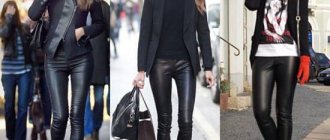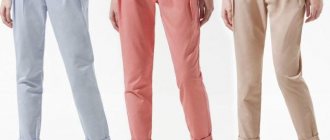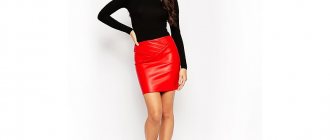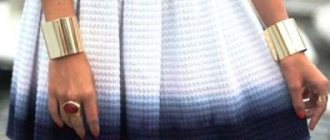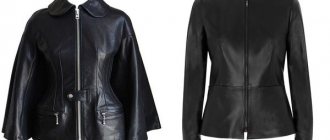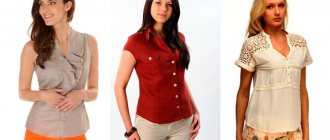Irina Khakamada is 60: rare photos and biography facts
Irina Khakamada // Photo: Starface
On April 13, politician, economist, writer and simply beautiful woman Irina Khakamada turns 60 years old. It’s hard to believe, because since the 90s of the last century, our birthday girl has not changed at all: she is true to her style and beliefs, always well-groomed, fit, attractive and friendly.
Using her example, Irina Khakamada managed to convince Russian women: they have the right to be active, to defend their rights, and to compete with men. In 1993, when Khakamada quickly burst into politics that was just emerging after the collapse of the USSR, she could not leave anyone indifferent: she was discussed, criticized, admired and envied at the same time. Twice the oriental beauty was recognized as woman of the year; according to Time magazine, Khakamada was included in the list of 100 famous women in the world.
Khakamada recalled her first appearance in the State Duma after the 1993 elections: “Everyone in parliament went crazy. They had never seen anything like this before - on the back of the head there was either a hieroglyph or a butterfly...”, referring to his hairstyle, which was bold at that time: a short haircut with shaved elements. Irina’s style was new, but it suited her incredibly: almost zero makeup, glasses with strict frames, but at the same time a certain note of relaxation - long skirts, loose trousers, fashionable silver jewelry. By the way, politician Konstantin Borovoy became an involuntary co-author of Irina’s image. It was he who advised her to change the surname of her first husband – Zlobin – to her father’s exotic surname. Announcers and journalists quickly learned to pronounce “Khakamada” without hesitation.
Irina Khakamada as a child // Photo: Press service archives
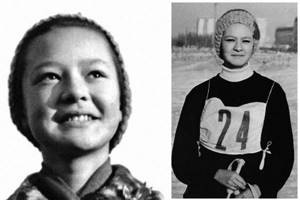
In her youth, the politician dreamed of getting rid of her oriental appearance // Photo: Press services archives
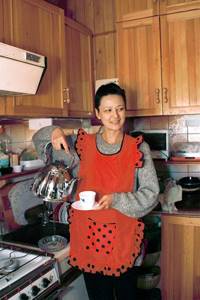
The politician admits that he doesn’t really like to do housework // Photo: Irakli Chokhonelidze / ITAR-TASS

Irina Khakamada at a State Duma meeting. 1994 // Photo: RIA Novosti
Irina Khakamada stayed in politics until 2008, when she announced a change in her field of activity. The active phase occurred in the decade from 1993 to 2003. In 2004, she was the only woman to run for president of Russia, but received only 3.84% of the vote. At times, Irina Khakamada’s actions and decisions seemed paradoxical, but it was impossible to deny her a completely unfeminine mind, logic and experience. It was she who represented the image of a female politician, enlightened and educated, which has now, unfortunately, left the stage. Khakamada herself sensed this trend, later saying with a tinge of bitterness: “We will really have women politicians when the problems of power are not solved in a bathhouse with vodka, beer and girls. A woman who goes into politics is a woman who goes for love. She wants everyone to love her."
However, a successful person is successful in everything, and Irina’s new life presented her fans with many surprises. There were books – with very provocative titles, for example the novel “SEX in Big Politics”. There was a story about the success of “SUCCESS in the big city,” trainings, radio broadcasts, and even a clothing collection that Khakamada created together with designer Elena Makashova.
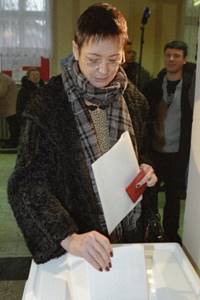
In the 2003 elections, Irina Khakamada did not enter parliament // Photo: RIA Novosti

With Boris Nemtsov and activists of the Union of Right Forces // Photo: Sergey Smolsky / TASS Photo Chronicle
And there was also a bold admission that she was raising a special daughter. The youngest Masha was born to Irina Khakamada with a diagnosis of Down syndrome. Later, the girl had to go through a battle with cancer, but now, fortunately, everything is behind her. The daughter often accompanies the famous mother at social events, Khakamada does not even think about hiding her. “Machine illness is the story of our family’s amazing unity,” she says. Irina has said more than once that the girl herself infected her parents with positivity during the most difficult periods. “Mom, don’t worry, I’ll get better,” Masha promised, and she really did recover. “Samurai character,” the star mother proudly states.
In addition to Masha, Irina Khakamada has an eldest son, Daniil, from her first marriage. He has already managed to make the politician a happy grandmother, although it is hard to believe. Now Irina is more busy with her family, although she is still a prominent figure in the gossip column.
Not only Eastern wisdom helps Khakamada keep herself in shape, but also simple rules: “Every morning I start at seven o’clock, and I immediately drink a glass of juice: half a grapefruit, half a lemon, a whole orange. You wake up from it. Then I turn on the TV, go to the exercise bike and pedal for about 20 minutes, then take dumbbells and do the most basic exercises for another 10 minutes. Then I go to the shower - turn on the hot water, then cold for a few seconds and then hot again,” she says.
It’s almost impossible to imagine this, but this woman, a model in every sense, dreamed of becoming a blonde as a child. I even begged my mother to buy a blonde wig, but the experiment failed. So for more than 20 years, Khakamada has been faithful to her style: she is easily recognizable by her short haircut and glasses. And there is no other such amazing figure in our country.

Daughter Masha is the pride of Irina Khakamada. The girl draws, plays sports and studies English // Photo: Sergey Milansky

Khakamada is the author of several books, both fiction and applied // Photo: ITAR-TASS/Vladimir Bertov
From image to style or vice versa? From Irina Khakamada.
Is image Is style an innate sense of harmony or can it be developed? How to show your individuality in a society of imposed consumption? Is it possible to manipulate the outside world with the help of image and style? And most importantly, how to find harmony between your inner self and external image? All these questions are examined in her book by Irina Khakamada, a public figure, writer and publicist with her own inimitable style. The author not only reveals her vision of style, she talks about her philosophy of life. After all, clothes, hairstyle, shoes, accessories are a means of self-expression that ensures the unity of body and mind, and therefore professional success. The book will be useful not only for women, but also for men, to whom the author pays special attention.
We present to your attention an excerpt from Irina Khakamada’s new book “In anticipation of yourself. From image to style » - From image to style or vice versa.
One day in Milan during Fashion Week, I saw a young man, thin, tall, dressed from head to toe in Prada, including a shoulder bag. He carried himself proudly and very separately. I thought then: this is pure style. Then I read that a total look - a person dressed in one brand - is a person without taste. It's amazing how complicated everything is. Or, for example, the presenters are female representatives on the RBC channel. Everyone, with the exception of Zhanna Nemtsova, adheres to a rustic, bright, sexy business style. Unlike the Dozhd channel. At Dozhd, girls and boys are fashionable and alternative, as befits secular intellectuals. But the presenters of federal channels are very strict (Irada Zeynalova). Have I just described the image or style? Channel or presenters?
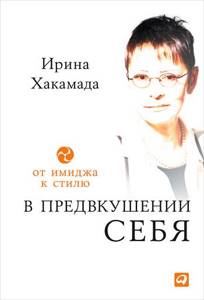
We go to the Internet. What do they say about the difference between image and style? To summarize, the following: based on the characteristics of the environment, certain norms of behavior in appearance are formed, which, of course, are associated with the specifics and nature of a certain type of activity. The formation of these standards occurs gradually, with an eye on the consumer, taking into account his expectations. ...The image must be impeccable from the outside, but you should not expect that it will “please” the soul. That's what style is for. Style is a reflection of a person’s inner world through appearance. Stylishness is individuality, a bright manifestation of oneself. Image will tidy up your appearance, while style will give you characteristics as a person. “There is a special art to connecting these two concepts together.”
Wow! Art... No less. They promise to teach you for a lot of money. Or maybe try it for free? In any case, I’ll try, claiming not as art, but as my own experience.
After my research with the design of an apartment and a dacha, I am drawn to comparisons with architecture and decor. It is not without reason that people often talk about the architecture of personality, or its archetype. But, oddly enough, I associate architecture more with image than with style. Not everyone is so rich and famous as to build an individual house, like, for example, Salvador Dali in Cadaques. The artist created level after level in accordance with the stages of his life. The house is small, in Port Lligat Bay, with stunning views of the sea. It stands alone, away from beaches and public places. The levels are not similar to each other, however, neither are the pictures. Dali's early paintings cannot be distinguished from the lyrical impressionists. The artist built on and rebuilt the fisherman's house, creating a secret spiritual refuge. Later he bought the neighboring ones, remodeled them and connected them to the ancestor.
Here's another example. Madeleine Vionnet, the famous dressmaker who at the beginning of the 20th century. freed the weaker sex from the corset and created bias cut in dresses, revolutionizing the female silhouette. The 96-year-old “naughty lady,” as Bruce Chatwin described her, lived in the 16th quarter of Paris, in a building left over from the belle époque. “The facade of her house is decorated with bunches of fruit and metal balconies in the most ponderous bourgeois taste. But once you walk through the door, you find yourself in a world of aluminum grilles, sandblasted walls, mirrored glass and smooth lacquered surfaces - an interior as crisp and unsentimental as the owner herself, Madame Vionnet.”
The second example is closer to me. Fate can take us to any real estate. For example, I lived in a state dacha for four years with government-owned furniture and dishes with stamps. And even there she managed to create her own world. We rarely choose a home; it often finds us in accordance with status or tradition. But the interior... Here you can play with yourself, reconstructing a given space with the help of furniture and other things.
In my opinion, image is similar to architecture. It is all outward and cannot exist separately from society. Whether we like it or not, as a showman, artist, politician, manager, official, we are faced with the need to adhere to a certain image. Just as architectural style is decisively influenced by climatic, technical, religious and cultural factors, so the image depends on all of the above, including profession. For me, the concept of “architectural style”, used in relation to a person, is most associated with image. Just as in architecture there is Gothic, Baroque, Classicism, Eclecticism, Art Nouveau, Constructivism, so in the image, depending on the time and environment, you can adhere to, for example, Gothic - for those who want to demonstrate religiosity, Baroque (in translation - whimsical) - for artists . Classicism is typical for officials, modernism for politicians, constructivism for managers, eclecticism for journalists. There may be some stretch in my reasoning, but it’s more convenient for me to look at the world this way. To reason on any topic, it is better to find any frame of reference. As soon as I found it in architecture and design, everything fell into place and now it is easier to answer the question why the image of the female presenters on the RBC channel is so different from what we see on the Dozhd channel or even on the Rossiya channel. 24".
RBC presenters emphasize the channel's business concept with their appearance. The business channel must meet the business halfway. And business is quite conservative when it comes to women. Subconsciously trusting male presenters more, viewers prefer to see sexuality in a woman on the screen. This is achieved with the help of a heavily low-cut suit, but not a dress. A sort of mixture of conservatism and baroque. Bright colors are added here - from red, yellow to green and blue. But Zhanna Nemtsova doesn’t care about sex signals and develops an absolutely business-like style, thereby emphasizing the rejection of women’s flirtatious flirting with men.
The Dozhd channel claims a different audience - a creative, thinking city dweller, a representative of the modern middle class. In this case, business classics give way to postmodernism. Anything goes: unexpected hairstyles and simple T-shirts. Fancy dresses and casual jackets of all kinds. Funny glasses and skinny trousers with sneakers. In general, intellectual glam or something like hipster fashion.
The Russia-24 channel, on the one hand, is close to RBC, since it sits on a “plate”, that is, it is not accessible to everyone, it is informational and is designed for a business audience. That is why the leading girls are charmingly beautiful and attractive. But, on the other hand, they are dressed more strictly, because they represent a state channel that has a wider coverage. In this case, girls need modesty so as not to offend conservative viewers who accidentally fly into the button.
Why do we need to analyze this? Well, at least so that you can dress properly when you go to a television shoot. If it is important for you to win over your audience, and with the help of your image, then it would be nice for them to become at least a little bit your own. For example, wearing sneakers to “First” or “Russia” is useless, just like showing up to “Rain” in a polka dot dress and with a bouffant on your head. I remember how I participated in a talk show on Channel 2 TV. Half of the guests were “our own”, and half were “not our own”. Among the latter are Vlad Lisovets and other fashionable male characters, all dressed entirely in chinos and loafers on bare feet. I found myself on the border of two worlds and heard how the conservative part was indignant at the lack of socks on men. “We were simply stunned! Irina, what is this?!” “Fashionable,” I answered and, after thinking, added: “Because it’s hot.” The argument is unconvincing, but at least somehow justifies the appearance of a newfangled company, which is so provocative, from the point of view of Soviet conservatives.
On television, you can achieve three goals: recognition, trust - or both. To be recognized, you don’t have to be “one of our own,” but to be trusted, you definitely have to; for both, you have to work extra. In the latter case, it is necessary to add style to the image, that is, to emphasize your individuality in the image. I often used accessories like glasses or shoes for this. I showed up to the “Iron Ladies” program with Tina Kandelaki and Margarita Simonyan in a modest dark blue trouser suit. But! At the same time, the trousers are very flared, and underneath are blue sneakers. Why? I knew that NTV’s audience was different, predominantly male, but younger than that of Rossiya and Pervy. Therefore, at my age, emphasizing sexuality was already stupid. I also understood that I would be surrounded by beautiful deputies from United Russia. Therefore, the sneakers resolutely demonstrated my non-officialdom and personal freedom. Tina appreciated them, immediately stating that I positioned myself very clearly. The camera won't miss sneakers.
So what's the style for me? What we fill the architectural space with. And here you can build anything, it belongs to us, it is not done for show, but for your comfort, to create an organic environment. By the way, I noticed that apartment owners who devote themselves completely to the designer violate the rule of creating a comfortable life. They get someone else's project. And there are no exceptions. If you want organics, you need to find a master who works in the concept of partnership, not dictate. And show your initiative at all stages: 1) when describing the project; 2) when discussing drawings; 3) when searching for furniture and accessories. And don’t rush with the latter. Over time, everything will be filled with a bunch of domesticated little things.
An acquaintance of mine at one time did not marry a girl only because her new apartment, like a laboratory, was ruled by the spirit of a doctor. No old photographs, no funny, cheap little things that carry a keen memory of something long ago, no well-read books and old magazines. Nothing. He got scared and disappeared.
This is why designer apartments are so cold, especially when both decor and architectural style are fused together. Everything is too correct, insensitive and professional. One young philosopher, when I asked why sex was disappearing from modern city life, answered: “Very simple. Because garbage dumps, barracks and other dirt are leaving.” There's something about it! Agree. Design irregularities create a sensual atmosphere.
A stylish person stands out, like an interior, with his bold “private” appearance. Through a carefully crafted or spontaneously created image, he conveys himself, his life values, way of life, positioning in space in relation to others, era, past and future. He can do it very quietly, like the aforementioned Andron Konchalovsky, and very loudly, to the point of screaming, like Nikita Dzhigurda. Intellectually careless, like Alexander Gordon, or pointedly authoritative, like Vladimir Solovyov. In any case, stylish people are most often mature, that is, they have accumulated a baggage of values, think about meaning and are very fond of spiritual comfort. Almost unconsciously, they want to reinforce their way of thinking with an external image.
Of course, few succeed in combining social necessity (image) and freedom (style). But if you cultivate taste, that is, a culture of combining figure and clothing, shoes, hairstyle and face, and are not afraid to remain free - not to become a victim of fashion or, conversely, self-deprecation - everything will work out. If you want. But if you need it, but don’t want to, then it’s unlikely. Style, like apartment decor, requires enthusiasm and desire. I think the unsystematic nature of the style is due to the lack of rules for its formation. Image can be regulated and calculated, but style cannot. If, as they say, you just buy it, then it doesn’t last long and wears out like any other thing, or is thrown away as something boring. Style is created only by those who feel the right things, just as a good chef, who creates his menu simply by touch, feels the ingredients. The recipe for his dish cannot be written in a cookbook. And even if you repeat it mechanically, in the end nothing will come of it. Once in Japan I was treated to Ukrainian borscht prepared by a diligent local chef. It turned out funny: the color is red, all the vegetables float correctly, the consistency is the same, and the taste is like miso soup.
Sometimes individuals of style look for brothers and, gradually spreading their tastes in a narrow environment, lose their own style and become part of a subculture. A striking example: hipsters - from the slang to be hip (“to be in the know”). Here, I take it from Wikipedia.
Time writes with irony: “A sweater passed down from your grandmother, Bob Dylan-style glasses, Converse sneakers and a can of Pabst - bam, you have a hipster.” Or other definitions: “Skinny, printed tank, Converse sneakers, Mokeskine notebook, iPhone.” They are often accused of lacking creativity and focusing on form at the expense of content. Like being aware of everything modern and alternative in art, but consuming it all becomes an end in itself of party life. It's about the present. But even in the past, you can find delightful examples of the formation of a philosophy of individual style.
For example, a dandy, today a metrosexual. Born in England at the end of the 18th and beginning of the 19th centuries, dandyism arose from gentlemanliness, but went further. He claimed not only sophistication of manners, but also a protest against imitation and vulgarity. A dandy is a bright, non-trivial personality who, breaking the rules and conventions in the image, dictates everything new and introduces fashion. This is exactly what Olga Weinstein writes in her book “Dandy”. Vulgarity refers, among other things, to the neatness and novelty of the costume. Negligence and refined modesty was achieved, among other things, by aging the outfit with sand or letting servants wear it. Are dandies still a serious alternative to the new bourgeois chic? I'm afraid not. Mass products of high brands dissolved everything like acid. How shabby and worn it is! Everything is brand new, brand new. Chic took away individuality.
The style has turned into the image of an advanced group of metrosexuals - dandies - brand lovers. If dandies exist, they are interspersed and only among the older generation. Maybe this is natural, since a person most often acquires values over the years.
So, style, unlike image, is deeply selfish and does not try to please the audience. A man of style is concerned with pleasing himself and expressing himself. And since he lives today in the postmodern era, stylish people, willy-nilly, but reflecting the era, are deeply eclectic. Postmodernism is an era that began in the 60s. XX century and continues to this day. A time of deep eclecticism, not a rejection of the past, but its revision and mixing with the present in attempts to guess the future. We, living in the post-
modernism, we perceive the world as chaos and try to survive in it, not rejecting either classics or modernity in all their manifestations. A new style appears by mixing enemies (classic and modern) and adding a taste of the present. There is “aesthetic eclecticism, the fetishization of consumer goods,” which the philosophers and theorists of postmodernism spoke about.
A thinking person (and only such a person is capable of having style), of course, reflects the chaos in the style and order of life. A man of chaos lives according to a plan, but is ready to change it or change it slightly. He listens to the doctor as carefully as he listens to his body. He plays sports under the guidance of a coach, but is ready to spit on his recommendations. He looks for an interlocutor in God, etc. When dressing, such a person keeps fashion trends in mind, but does not trust them blindly. He will be happy to buy an expensive thing, but provided that it really meets his needs. A person of style will easily miss a fashionable party if at that moment he wants to sit at home with a book. But at the same time he knows for sure that shoes should be expensive. As he lives, so he positions himself.
Can a style renounce its time? I don't think. The only thing that unites style and image is taste. And taste is generated by culture. And culture always reflects the era. So, in my deeply subjective opinion, any stupid copying is not style. If you dress entirely in vintage, you will either be a city madman or an old lady (old man). If everything is classical - an official or a frigid rich man. If you go to the avant-garde, then as an actor. Where are you? As where? In creating your life in an era of rapid change.
Let's try to summarize my reasoning in the form of a tablet.
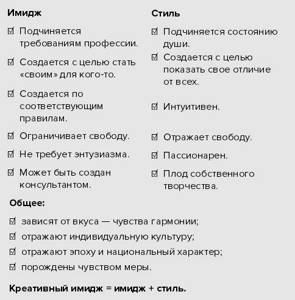
An excerpt from Irina Khakamada’s new book “In anticipation of yourself. From image to style” - From image to style or vice versa.

Irina Khakamada revealed her secrets of youth
Irina Khakamada, as she herself admits, has been keeping her weight at the same level for many years. She also always looks luxurious. And it’s not just about expensive things, diamonds. Quite the contrary, she, a business coach, can combine expensive clothes with sweaters, T-shirts, and trousers from the mass market. Irina attaches brooches from the costume jewelry category to her jacket, and her watch has inclusions of precious stones. The Piter.TV channel has already written that one of the principles of Irina Khakamada’s life is shikonomia. The gist of it is that there are items on the list of costs that cannot be crossed off. At the same time, other costs must be optimized. The technique, as it turns out, helps in matters of beauty. The Piter.TV channel learned from an ex-politician and business coach how a woman can maintain youth and a chic appearance.
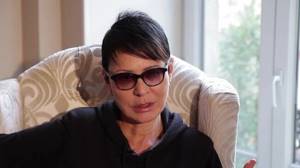
“The principle of shikonomy works here too. For example, if she doesn’t neglect herself and wants to look chic, then pharmacies sell South Korean face masks for three kopecks. What do girls do? No matter how busy they are, they run to the salon, spend terrible money, they put them on couches, apply these masks, and charge at least a hundred dollars for applying the mask. Well, buy it for five dollars, slap it on your face in the evening and watch a movie. What is the problem? But do it every day. And you will have a well-groomed face. Secondly, many people spend a lot of money on decorative cosmetics. Here I have lipstick, I have tone, my eyelashes are like this, but at the same time I’m covered in acne. No need! You need to eat right, cleanse your skin, cleanse your blood, exercise, your skin will become tight and healthy. And she doesn’t need all this, because men see your whole disguise, you know? This doesn't make you any younger or more interesting. That's why many people glue their eyelashes on, lengthen them, cut them with silicone, and make Angelina Jolie lips. The result is similar to rubber ducks in mass quantities. A sense of proportion is a gift from the gods. Maximum naturalness, only naturalness needs to be put in order. It doesn’t cost as much money as it costs to cover up and veil the ugliness,” advises Irina Khakamada.

In the recent past, a professional female politician at her own master class in the Northern capital, “Chic without Expenses,” tells listeners that while working in the sphere of power, she liked to stand out from the rest when ladies were limited by the rules of the dress code. Khakamada simply wore, for example, a classic black floor-length skirt.

Irina invites all women to create their own style. To do this, you need to mentally, or better yet, in reality on paper, draw a silhouette of your own figure. Then add clothes to this picture in a different color, eliminating the imperfections of the shapes. This way you will decide what you need. When it's time to go shopping, you'll know exactly what to buy. After shopping, all that remains is to enjoy the appearance.
Arina Sharkova, Ilya Butakov, Dmitry Khrykin.
Video: channel
Irina Khakamada: How to dress to become president
Even Irina Khakamada’s reads like a non-trivial biographical novel. Junior Researcher. Teacher. Expert and member of the exchange council of the Russian Commodity and Raw Materials Exchange. Created the Economic Freedom Party. Elected as a deputy to the State Duma. Named one of the 100 most famous women in the world by Time magazine. She again became a State Duma deputy. Appointed chairman of the State Committee of the Russian Federation for the support and development of small businesses. She was again elected to the State Duma and became vice-speaker there. Couldn't get into parliament. During the seizure of the Theater Center on Dubrovka, she negotiated with terrorists. She ran for the post of President of Russia. Nominated for the Nobel Peace Prize. She became the chairman of the “Our Choice” party. Left politics.
Writes books. One of them is going to be made into a film. Conducts radio and television programs. Together with designer Elena Makashova, she produces the HakaMa clothing line. He reads master classes on how to be successful in modern Russia while remaining a free person. Based on her own experience, she tells women how to be happy, how to combine seemingly incompatible things - success, money, love.
Indeed, how can a successful woman maintain her sexual attractiveness and not become a “man in a skirt”? Is it possible to use clothing to “bring down the degree” of masculinization or, on the contrary, to add leadership qualities to oneself? Forbes Woman decided to ask Irina Khakamada about this
“I’ll start correcting my stupidity”
F : Masculinization is a common phenomenon for women who occupy leadership positions in business and politics. Why do you think this is considered a problem in the public consciousness and in the individual woman's consciousness? In the end, the goals have been achieved: taxes are paid, children are fed, clothed, educated...
– We will not talk about public consciousness, because both your country and ours are more traditionalist countries. We live in a man's world, so the social myth is created exactly what is convenient for a man: a working business woman is not a wife, not a mother. It's not interesting to discuss this.
But there is a real problem - the behavior of such women, their relationships with men. If you are effective in an enterprise, in a corporation, in your project, then you have to use masculine traits: harsh intonations in your voice, the need to keep everyone on a tight rein and follow your instructions, charisma, leadership, which requires convincing people that you are cooler than other. A man tries this model at work, this model is effective, but he does not have time to switch himself, like a computer, to another program when he comes home and communicates with a man. This is problem. To avoid this problem, you need to have a flexible consciousness and change models.
F : When a woman is a leader in business or politics, does her sexuality help her? I’m not talking about vulgar things, but about the fact that when she comes in, it’s clear: a woman, not a man in a skirt.
– Sexuality and sex appeal are two different things. Overt sexuality is harmful at work, so it must be turned into sexuality. You are covered in a business suit, but sexuality can be seen by the color of your skin, what your eyes are, what your pose is. All this will be read, it works.
F : If we talk about another type of relationship “male leader – female subordinate,” then women sometimes have to deal with a boorish boss. You advise looking at him calmly and repeating: “Your libido will soon end anyway, but mine is eternal.” This is offensive for men, but pleasant for women. And, nevertheless, why is “eternal libido” needed in such relationships?
– Because in a man’s world there is age discrimination against women, when a woman over 40 is called an old woman, when a woman over 50 is called a menopausal fool. If you take offense at this, your life will end prematurely. In order to psychologically resist this, one must always internally remember that a woman’s libido is limitless, while a man’s is limited. When they are rude to a woman, they are actually defending themselves, these are just complexes. You should never say this to men. The fact that you are going to write this is a mistake.
If a man is aggressive and attacks you, in order not to suffer and not get into a fight, you need to say to yourself: “You are aggressive because you have a limited libido. I forgive you". When he tells you that he is the boss and you are a fool, you answer him: “Maybe you are right. I’ll go and start correcting my stupidity,” and that’s all.
How to Dress to Be President
F : Is it possible to reduce the “degree of masculinization” with the help of clothes?
– With the help of clothes this can be done quite simply. Business women need to periodically wear business dresses, skirts, tops - and then masculinization will go away. Pantsuits can also be worn, but do it less often, once or twice a week. And secondly, pair trousers not with a jacket, but, for example, with knitwear, it looks more feminine.
F : Is the reverse process possible? If you need to add leadership qualities (read: masculine) with the help of clothing, then what should you do?
– Then, on the contrary, add strong colors, for example, a dark blue suit, a white shirt. You can cut your hair shorter and not wear a lot of brooches, bows, and so on. Then you will give yourself a more masculine appearance.
F : What should women of the post-Soviet space rely on when putting together a wardrobe if we don’t have “style roots”?
– First, you need to draw the contours of your figure on a piece of paper, and then geometrically apply different shapes of clothing to it so that your silhouette stretches out. In Soviet times, children had such toys - a cardboard figure and paper clothes on clothespins. You need to experiment first with the help of graphics and paper. Once you have found the optimal silhouette, you need to go to the store and look in the store. And don’t look for a set, but look for individual parts and combine them. This makes it possible to save money.
Never highlight flaws. I don’t know how it is in Kazakhstan, but in Russia all women who have a belly and it is in folds always buy knitted dresses, and they also fit true to size. You don’t need to buy knitwear, you need to buy a stiffer material - and then it will remove wrinkles. Or when you want a knitted dress, you need it to be a-line and one size larger. And if it hangs on the shoulders (the shoulders are narrow and the belly is large), then hem the shoulder pads, then the whole dress will rise, excess material will go over the shoulders, it will become completely trapezoidal - and the belly will completely disappear.
F : In one of your books, you joked that you didn’t win the Russian presidential election because you didn’t dress like that. And if you imagine that you are now running for president, how would you dress?
– I would definitely be in dark blue, not black. I would have a straight skirt, not pants, and this skirt would be mid-ankle length, a pencil skirt. And I would have a very small, very short jersey jacket with padded shoulders. And under it I would wear a very small T-shirt.
F : Why such attention to color - not black, but dark blue?
– Because black is too typical, and the president needs to stand out. In addition, dark blue suits brunettes more than black. Secondly, dark blue is more businesslike, and black is more evening. Thirdly, dark blue is colder, and black is warmer, so it (dark blue) emphasizes your position, that you are kind of tall.
“The main problem is to want”
F : It is believed that a good wife, mother and businesswoman are incompatible concepts. You have the exact opposite point of view. Why?
– This can be combined for one simple reason: a person’s energetic, mental and intellectual capabilities have no limits. Therefore, the main problem is to want. If you want, you can do it.
F : You gave master classes in our country. Have you noticed the difference between audiences in Russia and Kazakhstan?
- There is no difference. Your audience is smart, very inquisitive, advanced, even more inquisitive and advanced than ours - your women are smarter, and they grasp it much faster. They are brave, with an iron will, like all Eastern women, so they very quickly understand what they need to do, and, unlike us, they begin to do it right the next day.
